
The Star of David: Ancient Origins and Spiritual Power Behin...
541 views · Oct 3, 2024 horoscopochino.co
The Star of David: Ancient Origins and Spiritual Power Behind the Sacred Symbol The Star of David, a symbol recognized by millions, is one of those enigmatic shapes that seem to vibrate with ancient wisdom. What is it about this six-pointed star that has endured through centuries, carrying with it the weight of mystery, spirituality, and divine connection?. Its origins are shrouded in mystery, stretching beyond religion and history, touching upon ancient cultures and spiritual philosophies. Some historians suggest that the six-pointed star, or hexagram, appeared in early Mesopotamian, Egyptian, and even Indian spiritual traditions, symbolizing the union of opposites—fire and water, male and female, earth and sky. In these cultures, it was believed to represent harmony and balance, a cosmic reflection of the universe's eternal dualities. The Star of David as we know it today began to take on religious significance in medieval Jewish communities. Known as the "Magen David," meaning "Shield of David," it was believed to symbolize divine protection, invoking the power of King David, the legendary ruler of Israel. But beyond its association with Jewish identity, the star also serves as a reminder of the interconnectedness of all things. The two interlocking triangles represent the merging of heaven and earth, the human and the divine, encapsulating the idea that our spiritual journey is one of integration and unity. In the context of modern spirituality, the Star of David resonates with those seeking harmony within themselves and the universe. It is a reminder that we are all connected, that the material and the spiritual are not separate but intricately woven together. Many wear it as an emblem of protection, while others meditate upon its form, using it as a guide to align the physical body with higher spiritual realms. So, what does the Star of David mean to you? Is it simply an ancient symbol, or does it speak to a deeper truth about the balance between your inner and outer worlds? Let’s reflect on its significance in our lives and share our interpretations. #StarOfDavidMeaning #SpiritualSymbolism #divineprotection

The Sun's Triumph: Summer Solstice, Stone Circles, Solar...
1K views · Sep 6, 2024 horoscopochino.co
The Sun's Triumph: Summer Solstice, Stone Circles, Solar Myths, and Pagan Rituals Imagine a world bathed in the golden hues of an endless day. A time when the sun, at its zenith, casts its benevolent rays upon the earth, illuminating every corner with warmth and vitality. This is the Summer Solstice, a celestial event that has captivated humanity for millennia, inspiring awe, reverence, and a deep connection to the natural world. Stone circles, enigmatic structures erected across various continents, stand as silent witnesses to our ancestors' profound understanding of the cosmos. These ancient monuments, aligned with the sun's path, served as sacred spaces for observing celestial cycles and performing rituals honoring the solar deity. Stonehenge, perhaps the most iconic example, is a testament to the ingenuity and spiritual significance of these structures. Solar myths, woven into the tapestries of countless cultures, celebrate the sun as a life-giving force. From the Greek god Helios driving his chariot across the sky to the Egyptian sun god Ra, sailing through the underworld each night, these tales reflect the profound reverence humans have held for the sun's power. Pagan rituals, rooted in pre-Christian traditions, continue to be practiced by many today as a way to connect with nature and celebrate the sun's return to its peak. These rituals often involve bonfires, music, dancing, and offerings to the solar deity. The Summer Solstice, as a time of abundance and renewal, is a particularly auspicious occasion for such celebrations. Beyond their spiritual significance, stone circles and solar rituals offer valuable insights into the astronomical knowledge and cultural practices of ancient civilizations. By studying these ancient traditions, we can gain a deeper understanding of how our ancestors perceived the world and their place within it. Moreover, the Summer Solstice provides an opportunity for us to reconnect with nature and appreciate the beauty and power of the sun. As we witness the sun reaching its highest point in the sky, we can feel a sense of awe and gratitude for the life-sustaining energy it provides. As we delve deeper into the mysteries of the Summer Solstice, we are reminded of our interconnectedness with the natural world. The sun, a constant presence in our lives, is a symbol of hope, vitality, and the enduring power of the universe. By understanding the significance of this celestial event and honoring the traditions associated with it, we can deepen our own spiritual connection and find solace in the rhythms of nature. What are your thoughts on the Summer Solstice? Have you ever participated in a solar-themed ritual or visited a stone circle? Share your experiences and insights in the comments below. #SummerSolstice #StoneCircles #SolarMyths

The Healing Power of Shiatsu Massage: An Ancient Technique f...
2K views · Sep 5, 2024 pcweb.info
The Healing Power of Shiatsu Massage: An Ancient Technique for Modern Wellness Imagine a massage that not only relaxes your muscles but also revitalizes your energy and restores balance to your body. Shiatsu massage, a traditional Japanese technique, does precisely that. For health and beauty enthusiasts seeking a holistic approach to wellness, Shiatsu offers a unique blend of physical and emotional benefits that go beyond the surface. Shiatsu, which translates to "finger pressure," is a therapeutic practice that involves applying gentle pressure to specific points on the body using the fingers, palms, and thumbs. Unlike other forms of massage that may rely on oils or lotions, Shiatsu is typically performed through clothing, making it a more accessible option for many. The core philosophy behind Shiatsu is rooted in the principles of Traditional Chinese Medicine (TCM), which emphasizes the balance of energy, or "Qi," flowing through the body's meridians. When these energy pathways are blocked or out of balance, it can lead to physical discomfort or emotional distress. In a world increasingly focused on quick fixes, Shiatsu offers a refreshing alternative by targeting the root causes of various ailments rather than just the symptoms. Regular Shiatsu sessions can help alleviate a range of conditions, from chronic pain and tension headaches to digestive issues and anxiety. By promoting the free flow of energy and stimulating the body's natural healing mechanisms, Shiatsu helps improve overall health and well-being. One of the standout benefits of Shiatsu massage is its ability to reduce stress and anxiety. The rhythmic, deep pressure applied during a session triggers the parasympathetic nervous system, promoting relaxation and reducing the production of cortisol, the body's stress hormone. For beauty enthusiasts, the stress-relieving effects of Shiatsu can have a positive impact on skin health. Lower stress levels mean fewer breakouts and a healthier complexion. Additionally, Shiatsu can enhance circulation and promote lymphatic drainage, which helps detoxify the body. This process not only supports immune function but also improves skin elasticity and reduces puffiness, giving you a naturally radiant look. Furthermore, Shiatsu’s focus on balance and harmony can enhance your overall sense of well-being, making it an ideal complement to any beauty regimen. Are you ready to experience the rejuvenating benefits of Shiatsu massage? Share your thoughts in the comments below and let us know how this ancient technique has transformed your health and beauty routine! #2024 #shiatsumassage #shiatsu #holisticwellness #naturalbeautycare

Pixiu or Piyao Rings: An Ancient Symbol of Wealth and Good F...
69 views · Aug 12, 2024 horoscopochino.co
Pixiu or Piyao Rings: An Ancient Symbol of Wealth and Good Fortune Pixiu or Piyao rings, jewelry steeped in centuries-old history, are essential elements in the practice of Feng Shui. These jewels are not mere decorations; they are imbued with profound meanings and mystical powers aimed at attracting wealth and good fortune. Let's explore the fascinating world of Pixiu rings together and how they can positively influence your life. The Pixiu, also known as Piyao, is a legendary creature from Chinese mythology, often depicted as a winged lion with a dragon's head. According to lore, the Pixiu has the ability to ward off evil spirits and attract wealth. It is often associated with financial prosperity and protection against negative energies. In Feng Shui, it is commonly used to enhance the flow of positive energy and promote abundance. Rings adorned with Pixiu are particularly prized for their beneficial properties. It is said that wearing a Pixiu ring can not only attract wealth but also preserve the wearer's financial assets. The Pixiu is perceived as a tireless guardian who protects his master's possessions and ensures that money flows in without ever flowing out. This characteristic makes it a powerful symbol for those looking to improve their financial situation. In addition to their ability to attract wealth, Pixiu rings are also reputed to bring luck and success in various aspects of life. Whether it’s professional achievements, material gains, or personal happiness, these rings are seen as lucky charms. They encourage a harmonious environment and protect against harmful influences. It is crucial to know how to wear a Pixiu ring to maximize its beneficial effects. Traditionally, it is advised to wear the ring on the left hand. In Feng Shui, the left hand is considered the receiving hand, the one that attracts and captures positive energies. Additionally, it is important to position the Pixiu so that it faces outward, as if looking at the outside world, ready to attract wealth and good fortune. Regarding material, Pixiu rings can be made from various substances, each with its own virtues. Jade rings are very popular, as jade is a precious stone in China, symbolizing purity, serenity, and protection. Gold or silver rings are also common, representing prosperity and financial stability. Finally, it is essential to take proper care of a Pixiu ring. It is recommended to clean the ring regularly to avoid the accumulation of negative energies and to recharge it by placing it under the light of the moon or the sun. By taking care of your ring, you ensure that its protective and attractive powers remain intact. In summary, Pixiu or Piyao rings are much more than simple jewelry. They embody powerful symbols of wealth, luck, and protection. By integrating such a ring into your daily life, you open the door to a multitude of blessings and prosperity. Watch more videos like this in our associated playlist or check out the recommended video in the description of the video you just watched. Also watch: The Black Heart: Unraveling Its Meaning in Love and Spirit https://youtu.be/hVeeGyrALdI

The Fall of Babylon in Revelation 18
1K views · Jul 31, 2024 horoscopochino.co
The Fall of Babylon in Revelation 18 The Book of Revelation, often referred to as the Apocalypse, is the final book of the New Testament. It is rich with symbolic imagery and prophetic visions. Chapter 18 of Revelation presents a vivid and dramatic portrayal of the fall of Babylon the Great, a symbol of worldly power and corruption. This chapter serves as a poignant reminder of the ultimate triumph of divine justice over human wickedness. Revelation 18 opens with the vision of an angel descending from heaven, possessing great authority, and illuminating the earth with his glory. The angel's proclamation is somber: "Fallen, fallen is Babylon the Great!" This declaration signifies the imminent and total destruction of Babylon, which is often interpreted as a representation of the Roman Empire or more broadly, as a metaphor for any corrupt, oppressive power throughout history. The angel elaborates on the reasons for Babylon's downfall, emphasizing its role as a dwelling place for demons and a haunt for every unclean spirit. Babylon's influence is described as intoxicating, having led nations and kings astray through its seductive luxuries and wealth. Merchants of the earth have grown rich from the power of her excessive opulence, highlighting the interconnectedness of commerce, greed, and moral decay. A second voice from heaven urges God's people to "come out of her," warning them to avoid complicity in her sins and to escape the impending plagues. This call for separation underscores a recurring biblical theme: the necessity for the faithful to remain pure and distinct from corrupting influences. The plagues that Babylon will endure are described in vivid terms—death, mourning, famine, and complete destruction by fire. The lamentation over Babylon's fall is profound. Kings, merchants, and mariners—all who benefitted from her—stand at a distance, weeping and mourning. They lament not only the loss of Babylon but also their own economic ruin. The merchants, in particular, are depicted mourning the loss of luxury goods—gold, silver, precious stones, and fine fabrics—highlighting the transient nature of material wealth. In contrast to the earthly mourning, heaven rejoices over Babylon's fall. The destruction of this corrupt entity is seen as an act of divine retribution for her arrogance and the bloodshed of saints and prophets. The angel envisions Babylon as a great millstone thrown into the sea, symbolizing her violent and irreversible end. Revelation 18 concludes with a powerful image of finality: the complete silencing of Babylon. The sounds of music, crafts, and daily life will never be heard in her again. The light of a lamp will never shine in her, and the voices of bride and groom will be silenced. This desolation serves as a stark reminder of the consequences of unchecked sin and the ultimate sovereignty of God's judgment. The fall of Babylon in Revelation 18 is a compelling narrative that speaks to the inevitable downfall of corrupt powers and the enduring hope of divine justice. For Bible enthusiasts, this chapter offers a rich tapestry of symbolism and prophecy, encouraging deeper reflection on the nature of power, corruption, and redemption. For more insightful explorations of biblical themes, consider watching related videos in our playlist or check out the recommended video linked in the description. also Watch The Book of Revelation: Chapter 1 Unveiled https://youtu.be/EKdFyFOcPCI

Ancient Wonders of the Akrotiri Archaeological Site
5K views · Jun 18, 2024 pcweb.info
Ancient Wonders of the Akrotiri Archaeological Site Akrotiri, a remarkable archaeological site located on the Greek island of Santorini, offers an extraordinary glimpse into the ancient Minoan civilization. Often referred to as the "Pompeii of the Aegean," this well-preserved site unveils a sophisticated urban center that thrived until it was buried by volcanic ash around 1600 BCE. Akrotiri's significance lies not only in its state of preservation but also in the insights it provides into the life, art, and technology of a bygone era. The origins of Akrotiri date back to the Late Neolithic period, but it reached its zenith during the Late Bronze Age. The settlement was a bustling trade hub, strategically positioned for maritime commerce between Crete and the other Aegean islands. The catastrophic eruption of Thera (modern-day Santorini) buried the city under meters of volcanic ash, which paradoxically served to protect it from the ravages of time, preserving buildings, frescoes, pottery, and even everyday objects. Upon entering the Akrotiri site, visitors are immediately struck by the complexity and sophistication of the ancient town planning. Multi-story buildings constructed with ashlar masonry, intricate drainage systems, and well-paved streets highlight the advanced nature of this ancient civilization. The structures, many of which stand several stories tall, offer a rare view into the architectural prowess of the Minoans. One of the most fascinating aspects of Akrotiri is its stunning frescoes. These vibrant wall paintings depict various aspects of Minoan life, including religious ceremonies, nature, and everyday activities. The "Spring Fresco," with its vivid depictions of swallows and lilies, and the "Boxing Children" fresco are among the most famous. These artworks provide valuable insights into the aesthetic values, clothing, and social practices of the ancient inhabitants. In addition to its artistic treasures, Akrotiri is notable for its advanced technological achievements. The town's sophisticated plumbing and drainage systems, which included indoor toilets and running water, were far ahead of their time. This level of infrastructure indicates a highly organized society with a deep understanding of engineering and urban planning. The artifacts uncovered at Akrotiri further illustrate the richness of Minoan culture. Pottery, tools, and personal items reveal much about the daily lives and trade practices of the inhabitants. The diversity of the artifacts suggests extensive trade networks, with items originating from as far away as Cyprus, Egypt, and the Near East. This interconnectedness underscores the importance of Akrotiri as a pivotal trading port in the ancient Aegean world. Visiting Akrotiri offers an unparalleled journey into the past. The site's preservation allows for a unique exploration of an ancient world, almost frozen in time. Walking through the streets and buildings of Akrotiri, one can imagine the vibrant community that once thrived here. The experience is both educational and evocative, providing a profound connection to our shared human history. For those interested in ancient history, archaeology, and the Minoan civilization, Akrotiri is an essential destination. The site is meticulously maintained, with covered walkways and viewing platforms that allow visitors to appreciate the ruins without causing damage. Informational displays and guided tours enhance the experience, offering deeper insights into the significance of the findings. In conclusion, the Akrotiri archaeological site is a treasure trove of ancient wonders. Its well-preserved ruins offer a captivating glimpse into the advanced and artistic Minoan civilization. From its sophisticated urban infrastructure to its stunning frescoes and diverse artifacts, Akrotiri provides an invaluable window into the past. As you explore this remarkable site, you'll gain a deeper appreciation for the ingenuity and cultural richness of the ancient world. For more in-depth explorations and fascinating insights into ancient sites like Akrotiri, be sure to watch the recommended video in the description or explore the associated playlist. Each video offers a closer look at the wonders of our world and the incredible history that lies beneath our feet. Also watch: Astypalaia Greece: Dodecanese Islands travel https://youtu.be/9i4Y7akbnKE
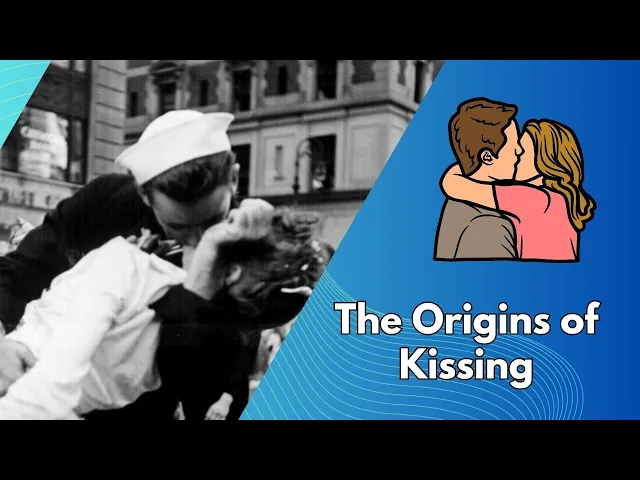
The Origins and Evolution of Kissing in Ancient Cultures
2K views · Jun 8, 2024 pcweb.info
The Origins and Evolution of Kissing in Ancient Cultures Kissing, an intimate act that transcends cultures and epochs, has a storied history that dates back thousands of years. While the exact moment of its invention remains elusive, evidence from ancient texts and artifacts provides a fascinating glimpse into the origins and evolution of kissing. The earliest recorded references to kissing can be found in ancient Indian texts, specifically the Vedic scriptures from around 1500 BCE. These Sanskrit writings describe a practice where individuals pressed their faces together, suggesting an early form of kissing. In ancient India, kissing was likely a means of expressing affection, love, and even reverence. The Kama Sutra, a classical Indian text on love and sexuality written between 400 BCE and 200 CE, further elaborates on various types of kisses and their significance in romantic relationships. In the ancient Middle East, evidence of kissing is also prevalent. The Epic of Gilgamesh, a literary masterpiece from Mesopotamia dating back to around 2100 BCE, includes references to kissing. This suggests that the act was not only known but also integrated into the social and romantic lives of the people. Similarly, ancient Egyptian art and literature depict scenes of kissing, indicating its role in expressing affection and social bonds. The Greeks and Romans played a crucial role in popularizing kissing and integrating it into their daily lives and cultural practices. The Greeks had a nuanced understanding of kissing, with terms such as 'philema' for a kiss of friendship and 'katagelastikos' for a mocking kiss. The Romans, too, classified kisses into three categories: 'osculum' for a friendly kiss on the cheek, 'basium' for a more intimate kiss on the lips, and 'savolium' for a passionate kiss. These distinctions highlight the social, romantic, and even political functions of kissing in ancient Greek and Roman societies. Despite these early references, kissing was not a universal practice. Some indigenous tribes in Africa, Australia, and the Americas did not traditionally engage in kissing. Instead, they expressed affection through other means, such as rubbing noses or foreheads. This cultural variation underscores that kissing is a learned behavior rather than an innate human action. The spread of kissing as a cultural practice can be traced through historical interactions and exchanges between different societies. The conquests of Alexander the Great, the expansion of the Roman Empire, and the Silk Road trade routes all facilitated the diffusion of cultural practices, including kissing. As these ancient civilizations interacted, they shared customs and traditions, leading to the widespread adoption of kissing in various forms. In addition to its cultural significance, kissing has also been associated with various health benefits. Scientific studies have shown that kissing triggers the release of neurotransmitters such as oxytocin, dopamine, and serotonin, which enhance mood and strengthen emotional bonds. Kissing also stimulates saliva production, which helps maintain oral hygiene by washing away bacteria and food particles. Furthermore, the act of kissing engages numerous facial muscles, promoting skin elasticity and contributing to a youthful appearance. In conclusion, while the precise origins of kissing may remain a mystery, its presence in ancient cultures highlights its enduring significance as a form of expression. To delve deeper into the fascinating history and cultural impact of kissing, be sure to watch the recommended video in the description below. #evolution #kissing #ancientcultures See also: https://youtu.be/eYl8ZqTC1Wg

Goddess Isis initiation Ancient Unveiling
549 views · May 20, 2024 horoscopochino.co
Goddess Isis initiation Ancient Unveiling Are you ready to unlock the secrets of one of the most powerful and captivating goddesses of ancient Egypt? Join me on a voyage of discovery as we explore the enigmatic initiation rites of Isis—goddess of magic, motherhood, and profound transformation. Isis, the 'Throne Goddess', reigns supreme in the ancient Egyptian pantheon. Her name itself, meaning (She) of the Throne, signifies her immense power. She was the very embodiment of the Egyptian throne, her authority intertwined with the ruling Pharaoh. Yet, Isis’s reach extended far beyond royalty, touching the hearts of all Egyptians. From opulent temples to modest homes, her comforting presence filled the land. Revered as a healer, a guardian against adversity, and a master magician, Isis was extraordinary. Her powers were said to revitalize the Nile, protect sailors lost at sea, and even raise the dead. Her most celebrated act – restoring life to her murdered husband, Osiris – cemented her as the supreme goddess of life and death. For the ancient Egyptians, Isis was the ultimate symbol of hope and rebirth, a beacon of strength in a world of uncertainty. The cult of Isis possessed a captivating allure unique in Egyptian spirituality. Picture candlelit temple chambers filled with whispers of reverence, the scent of frankincense swirling hypnotically. It was within these sacred spaces that initiation rituals unfolded, promising life-changing experiences for those devoted to the goddess. Texts offer fragmented glimpses of these secret rites: purification ceremonies, symbolic ordeals, and dramatic re-enactments of pivotal moments in Isis' mythology. The initiate's ultimate goal mirrored that of other ancient mystery religions—to forge an unbreakable bond with the divine. In the case of Isis, this connection was believed to imbue her followers with an unshakeable sense of purpose in this life... and hope for a blissful afterlife. While the full details of the rites remain shrouded in mystery, we can imagine their intensity. The initiate, cleansed and garbed in pure linen, enters the dimly lit temple. Hieroglyphs dance in the flickering light as priests chant age-old hymns. Perhaps, they are led into a hidden chamber where scenes come alive – a re-enactment of the sorrowful quest of Isis to gather her beloved Osiris' scattered body parts. Could it have been within this space that the initiate encountered a symbolic death and rebirth? This powerful element, mirrored in many ancient traditions, was designed to strip away the mortal self and reveal the spirit's eternal essence. Imagine the initiate emerging from the ordeal, transformed, one of the 'enlightened' within the goddess' inner circle. The secrecy surrounding these rites held an undeniably strong allure. It was a shared spiritual experience that created a powerful sense of community among the devout. Those who had undergone the rites gained an exclusive connection with the goddess, forming a sacred lineage woven through time. This bond offered spiritual solace, a sense of belonging in the ancient Egyptian world. But the path of Isis held even greater promises. The initiate wasn't simply part of a community; they believed they were securing a favorable destiny in the afterlife. In Egyptian belief, the journey after death was filled with trials, where the soul would be judged. The initiator of Isis trusted that their beloved goddess would act as their advocate and protector, guiding their spirit to eternal paradise in the Field of Reeds. Let this glimpse inspire you to explore more of the captivating mysteries of Isis. There's always more to discover! Also watch: Ishtar goddess meditation: Embracing Love, Power, and Transformation https://youtu.be/LJmdGQ52BsI

Ishtar goddess of love: the Paradox of the Divine Feminine
1K views · May 20, 2024 horoscopochino.co
Ishtar goddess of love: the Paradox of the Divine Feminine Mythology lovers, have I got a story for you today! We're diving into the world of one of the most fascinating and multifaceted goddesses of the ancient world: Ishtar. She's the Mesopotamian superstar of love, war, sexuality, and political power – a true force of nature with a wild and untamed spirit. Forget meek and mild; this goddess is all about owning her desires and seizing power with an unapologetic strength that commands attention. Ishtar's origins are rooted in the earlier Sumerian goddess, Inanna. Like a flame passed down through generations, these goddesses embody a vibrant legacy of feminine energy. Ishtar emerged in the Akkadian period (around 2334-2154 BCE), her influence spreading like wildfire across the Mesopotamian world. But don't think of her as a copycat; Ishtar brought her own unique flair to the table. Picture her, a breathtaking beauty with an insatiable appetite for love and a warrior's ferocity. This goddess isn't playing games – she's out there changing the rules of the game entirely! Ishtar is a symbol of passion, desire, and the raw, unfiltered power of the feminine. Yet, like all compelling figures, her story is full of contradictions and complexities. The Lover & The Warrior As the goddess of love, Ishtar is the OG femme fatale. She embodies sensuality and the intoxicating allure of desire, making her irresistible to gods and mortals alike. Tales whisper of her countless conquests, and she’s not shy about using her charms to achieve her goals. But don't mistake her for a pushover. Ishtar's love life is on her own terms – she's the one calling the shots. But there's more to Ishtar than meets the eye. This goddess is also a fierce warrior, leading armies into battle and conquering her enemies with relentless zeal. Her association with warfare may seem strange at first, but remember, in the ancient world, love and war were often seen as two sides of the same coin – both are forces of creation and destruction. This duality makes Ishtar a captivating figure. She reminds us that the feminine is not limited to a single archetype. Women can be sensual and nurturing while also powerful and assertive. Ishtar teaches us the importance of owning all aspects of ourselves, even those that may seem contradictory. A Descent into the Underworld One of Ishtar's best-known tales is her descent into the Underworld, ruled by her sister Ereshkigal. It's a dark and harrowing journey, one that strips Ishtar of her power and finery. Yet, it's precisely in this vulnerability that she discovers her greatest strength. This myth reflects the cyclical nature of life, death, and rebirth. It speaks to the transformative power of confronting our deepest fears. It also reminds us that even a goddess as mighty as Ishtar can experience loss and despair – but she has the resilience to rise again. Claiming Power & Embracing Desire Ishtar's story holds a profound message, especially for anyone interested in spirituality and the divine feminine. She encourages us to embrace our desires without shame or fear. She urges us to recognize our own power and use it to create our own destiny. Ishtar teaches us to fearlessly dance between the roles of lover and warrior, of vulnerability and strength, of darkness and light. If you're intrigued by this complex and fascinating goddess, there's so much more to discover! Her stories and symbols have echoed throughout history, inspiring countless artistic expressions and spiritual practices. Delving deeper into her mythology is a thrilling journey of self-discovery. And remember, a great way to continue the exploration is to check out other videos in this playlist, or dive into the recommendations below. Let Ishtar's fierce and unapologetic spirit ignite your own inner fire! Also watch: Ishtar goddess meditation: Embracing Love, Power, and Transformation https://youtu.be/LJmdGQ52BsI
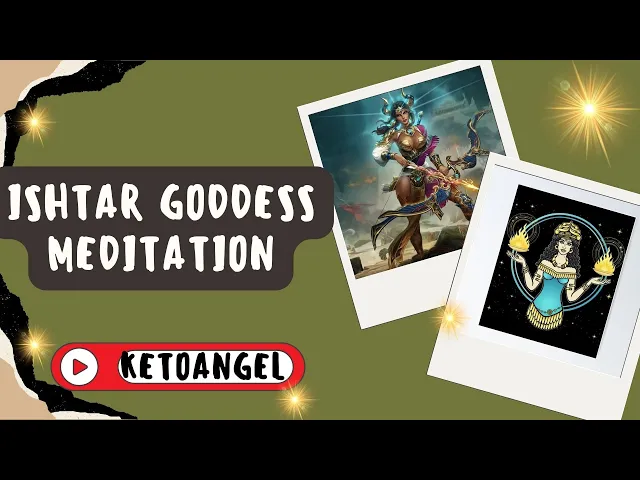
Ishtar goddess meditation: Video
756 views · May 7, 2024 horoscopochino.co
Ishtar goddess meditation: Video. In ancient Mesopotamia, she was the embodiment of the divine feminine, a force as complex and multifaceted as the human experience itself. For those who seek to connect with her spirit, an Ishtar meditation opens a doorway to a world of profound self-discovery.
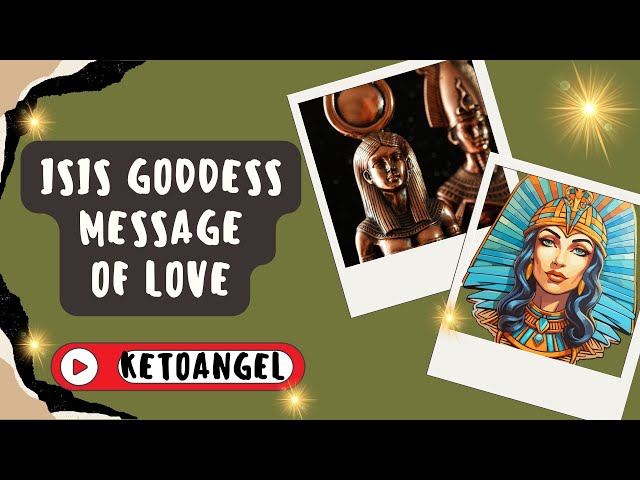
Isis goddess message of Love, Video
2K views · May 7, 2024 horoscopochino.co
Isis goddess message of Love, Video. Get ready, because today we dive deep into the story of Isis, the most beloved and influential of the Egyptian goddesses! Her name, which means "throne", reflects the power, wisdom, and love that she embodies.

Legends and Myths Related to Pixiu-Video
394 views · May 7, 2024 horoscopochino.co
Legends and Myths Related to Pixiu-Video. Then get ready to dive into the captivating myths surrounding Pixiu, a powerful celestial creature deeply revered in Chinese Feng Shui. Let's embark on a journey exploring extraordinary tales of fortune, protection, and the unwavering loyalty of these mythical beings!

Freya goddess of love and fertility-Video
2K views · May 7, 2024 horoscopochino.co
Freya goddess of love and fertility-Video. Freya, a central figure in Norse mythology, embodies love, beauty, fertility, and a touch of untamed power. She's not simply a goddess of sweet affections, but a force of nature, as wild and unpredictable as the desires of the human heart.
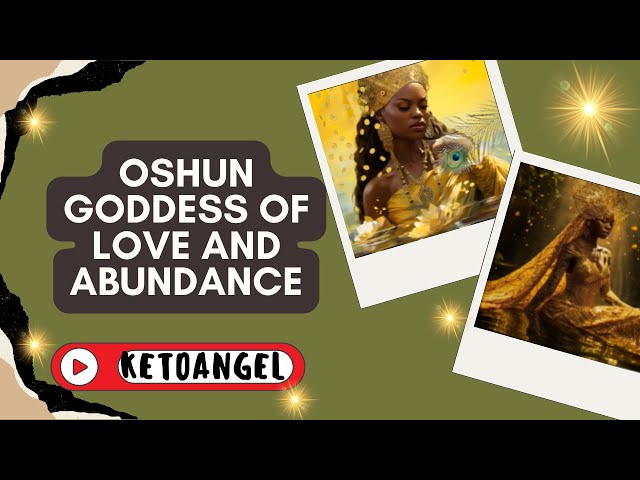
Oshun goddess of love and abundance-Video
5K views · May 7, 2024 horoscopochino.co
Oshun goddess of love and abundance-Video. Her story is captivating, her powers undeniable, and her influence ripples through cultures across the globe. If you're a fan of spirituality, prepare to be dazzled by the queen of the sweet waters!

China's Rise: Ancient Prophecies-video
2K views · Apr 29, 2024 horoscopochino.co
China's Rise: Ancient Prophecies-video. From the cryptic verses of Nostradamus to the enigmatic predictions of Baba Vanga, the Middle Kingdom is foretold to play a pivotal role in the unfolding of destiny.
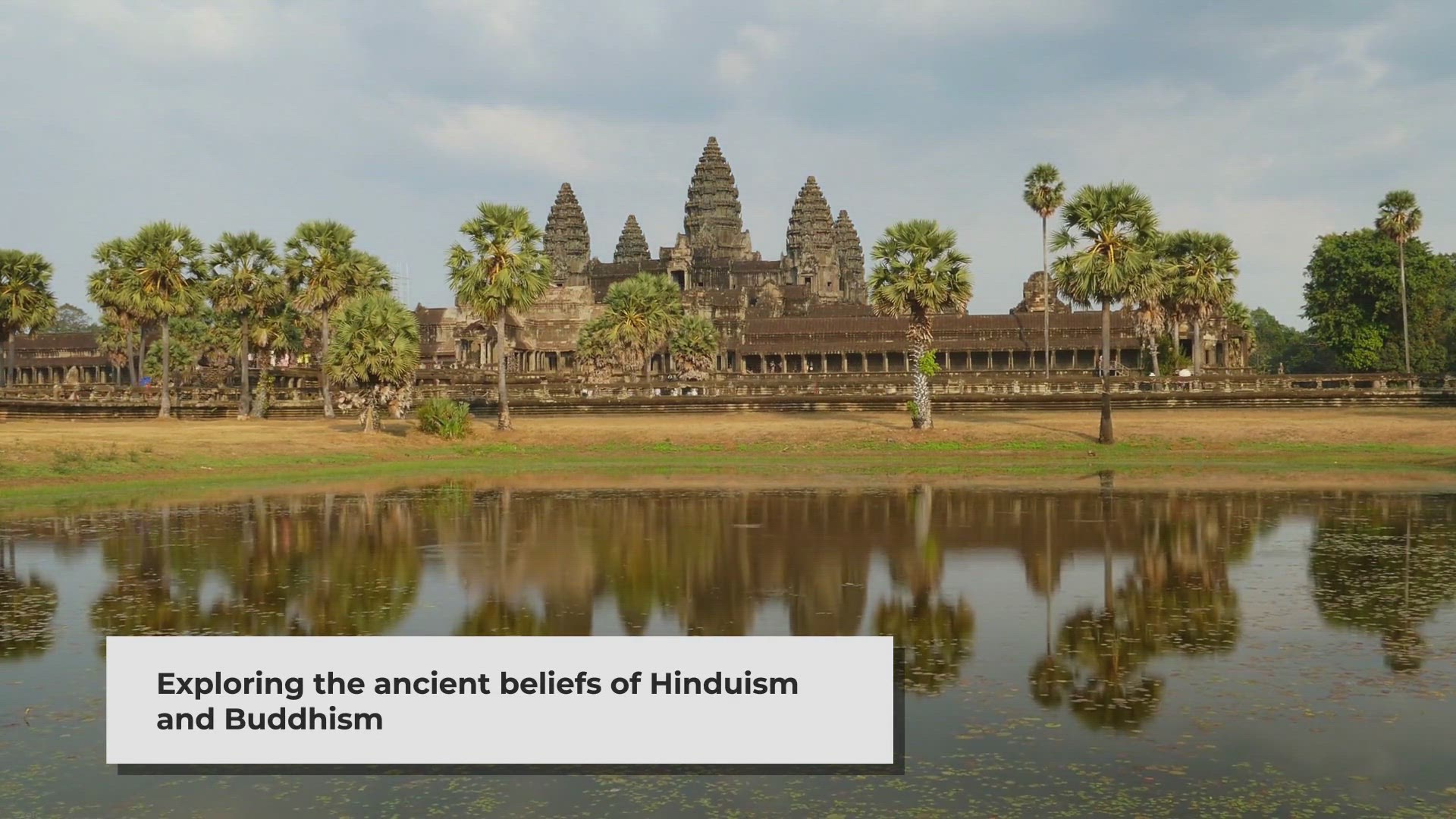
Hinduism vs Buddhism: Exploring Two Ancient Eastern Philosop...
5K views · Feb 26, 2024 horoscopochino.co
Delve into the similarities and differences between Hinduism and Buddhism, two profound belief systems that have shaped the cultural and spiritual landscape of the East for centuries.
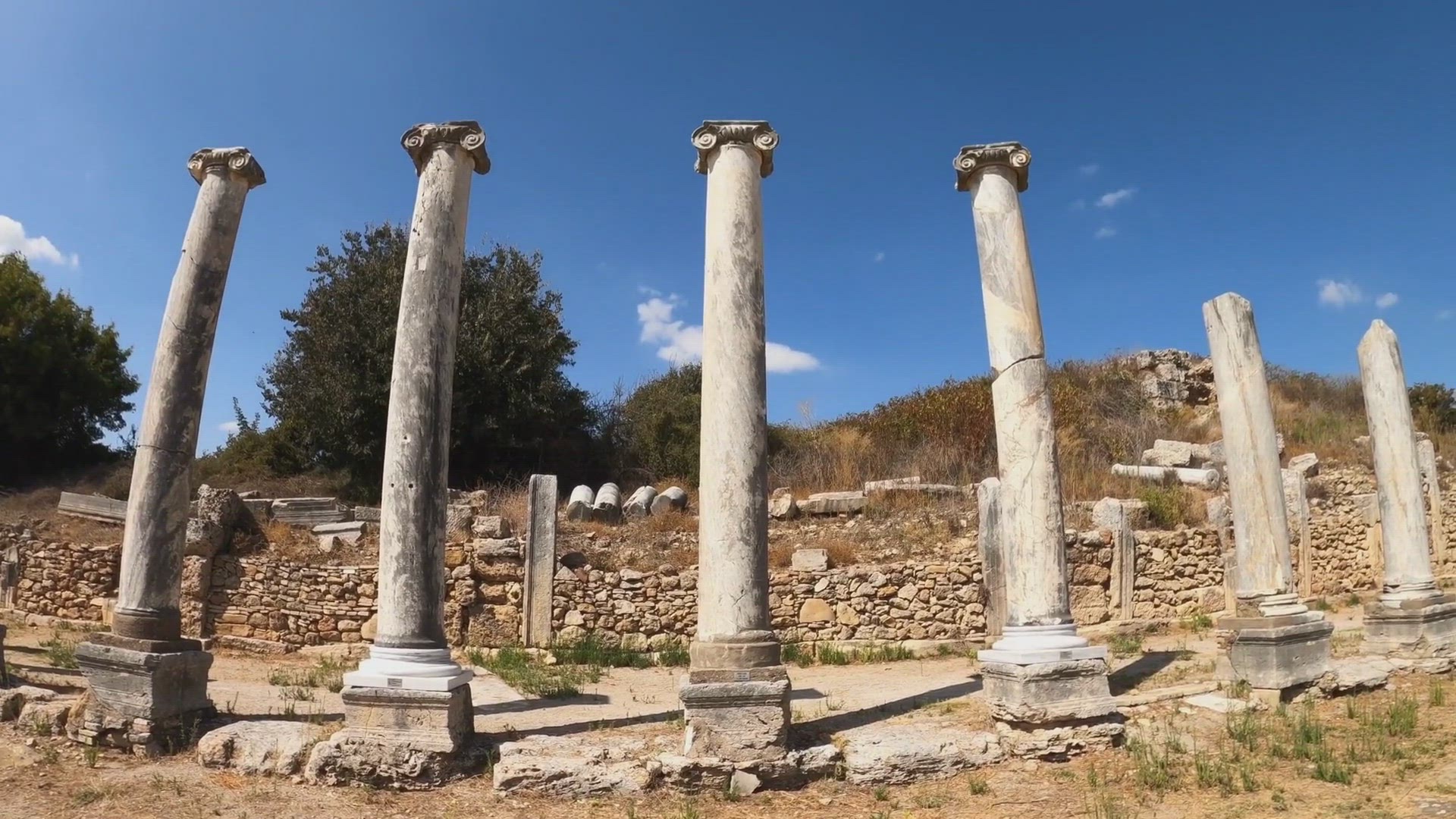
The Gods of the Canaanites: Mythology and Beliefs of the Anc...
49K views · Feb 22, 2024 pcweb.info
Delve into the rich mythology and intricate belief system of the Canaanites, an ancient civilization that flourished in the Near East. Explore the pantheon of gods worshipped by the Canaanites and the significance of their myths in shaping their worldview.
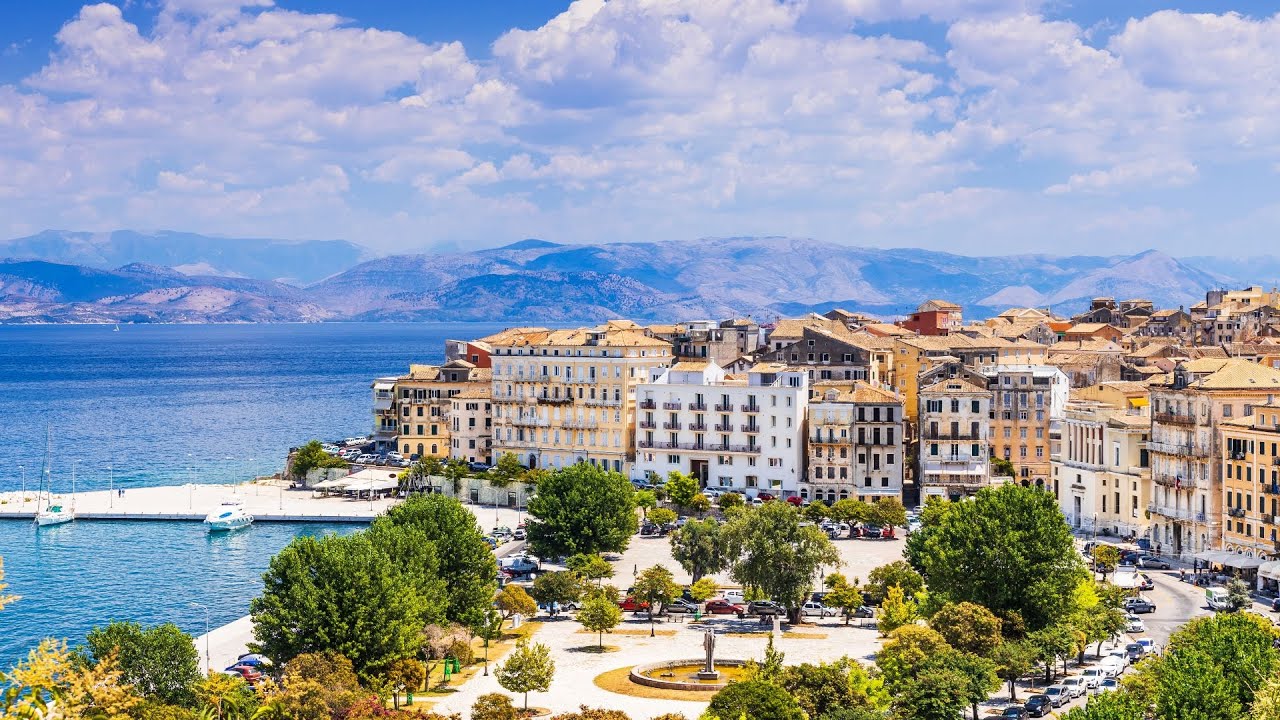
Samos ancient Greece: A Journey Through History and Mytholog...
8K views · Jan 23, 2024 pcweb.info
Samos ancient Greece: A Journey Through History and Mythology The island of Samos, nestled in the Aegean Sea near the coast of Asia Minor, is a place where the past whispers from every corner. A part of ancient Greece, Samos is a treasure trove of history, mythology, and natural beauty. This narrative aims to take you on an enlightening journey through the winding paths of Samos, shedding light on its significant contributions to the ancient world and its enduring legacy. A Storied Past: Foundations of Civilization Samos' history dates back to the 3rd millennium BC, with evidence of early settlements. Inhabited by Aeolian Greeks, it flourished as a center of trade and culture. The island's strategic location made it a significant maritime power, facilitating interactions across the Aegean Sea and beyond. The Sanctuary of Hera: A Testament to Devotion Among its most significant ancient sites is the Heraion of Samos, a sanctuary dedicated to Hera, the queen of the Greek gods. This colossal temple, considered one of the largest in Greece, exemplifies the island's religious significance. The Heraion was not merely a place of worship but also a hub of social and political activity. Pilgrims and dignitaries from across the Greek world would gather here, contributing to Samos' cultural and economic vitality. The Eupalinian Aqueduct: A Marvel of Engineering Samos also boasts one of the ancient world's engineering marvels - the Eupalinian Aqueduct. Designed in the 6th century BC by the engineer Eupalinos, this underground aqueduct is a testament to the advanced understanding of mathematics and physics of the ancient Greeks. It provided a steady water supply to the ancient city, underscoring the importance of infrastructure in sustaining a growing population. Philosophers and Mathematicians: The Intellectual Legacy The intellectual heritage of Samos is rich, with the island being the birthplace of several prominent figures. Perhaps the most famous of these is Pythagoras, the renowned mathematician and philosopher. His contributions to mathematics, particularly the Pythagorean theorem, are fundamental to modern science. The school he established on Samos laid the foundations for a tradition of critical thinking and inquiry. Cultural Significance: Festivals and Artistry The cultural life of ancient Samos was vibrant, marked by festivals and artistic endeavors. The Samos Dionysia, a festival in honor of the god Dionysus, was a highlight, featuring theatrical performances, music, and athletic competitions. The artistic output of Samos, including sculpture and pottery, was highly regarded, with works exported across the Mediterranean. Natural Wonders: A Landscape of Myths The island's lush forests, stunning beaches, and mountainous terrain are said to have inspired many myths. According to legend, it was in these very forests that the goddess Hera was born, and the river Imbrasos was where the nymphs nurtured her. Legacy and Modern Relevance Today, Samos is a blend of ancient splendor and modern charm. Its archaeological sites, museums, and restored monuments provide a window into a glorious past. Meanwhile, the island's natural beauty and warm hospitality make it a beloved destination for travelers from around the world. In conclusion, Samos is not just an island in the Aegean Sea; it is a symbol of the enduring legacy of ancient Greece. Its rich history, combined with its natural beauty and cultural significance, make it a fascinating subject for exploration and study. #samosisland #ancientgreece #history #mythology
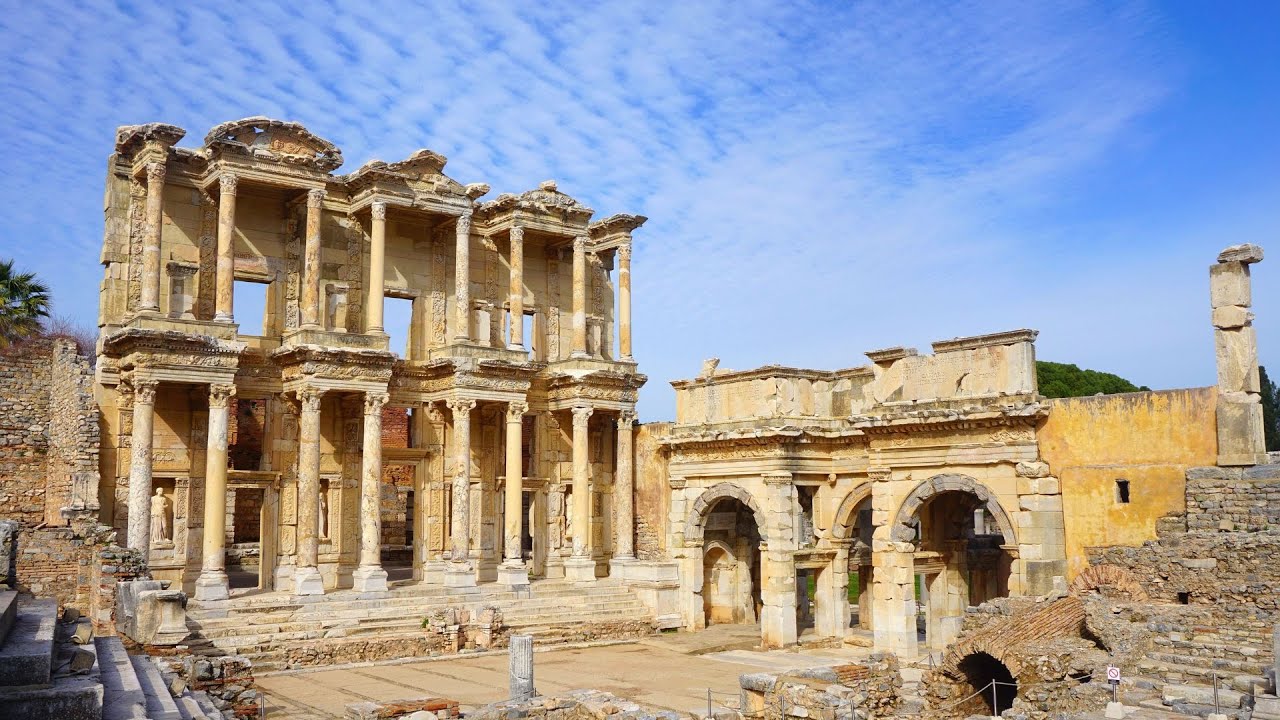
Ephesus, Turkey: A Timeless Journey Through Ancient History-...
4K views · Jan 14, 2024 pcweb.info
Ephesus, Turkey: A Timeless Journey Through Ancient History Welcome to Ephesus, one of the most significant archaeological sites in the world, located in the heart of Turkey. This ancient city, once a bustling metropolis and a significant center of early Christianity, now stands as a testament to the grandeur of the Roman Empire.
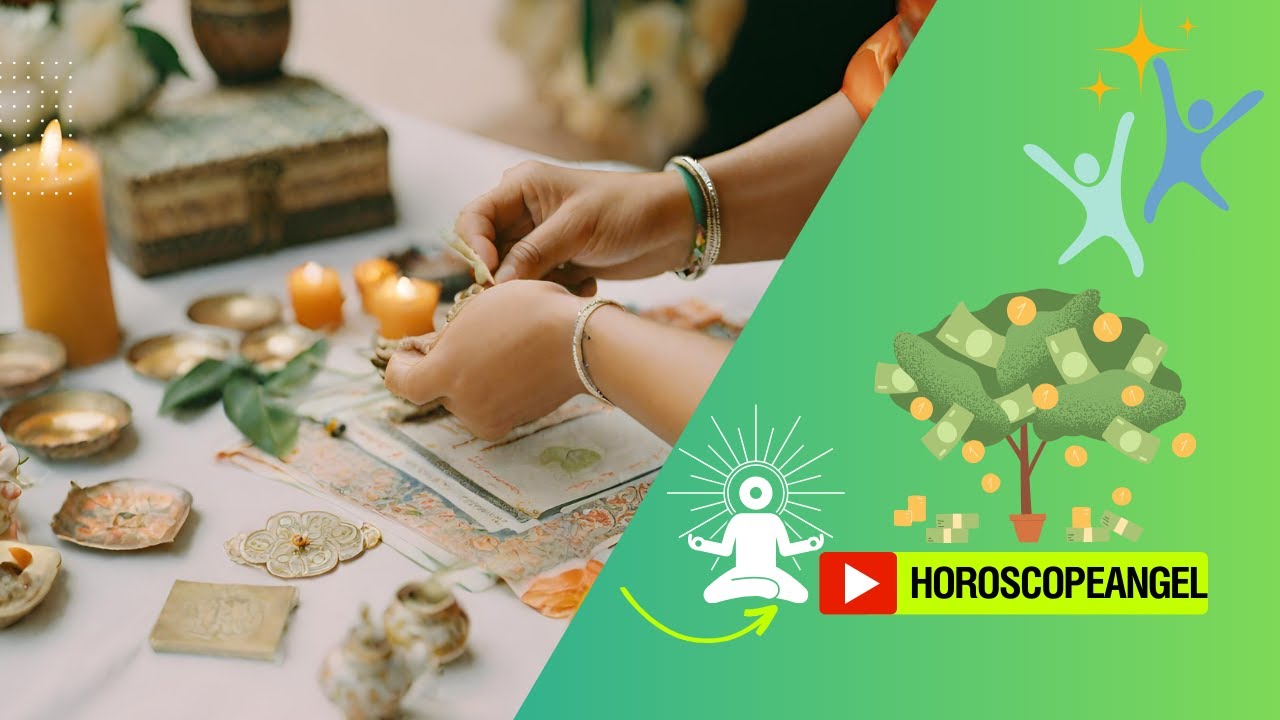
Ancient Rituals for Success, Prosperity and Fulfillment: vid...
1K views · Dec 22, 2023 horoscopochino.co
Ancient Rituals for Success, Prosperity and Fulfillment: video blog. Beyond conventional strategies, there exists a wealth of wisdom in ancient rituals that have been practiced for centuries by various cultures around the world. These rituals offer profound insights and methods for achieving success and fulfillment in our modern lives. In this exploration, we will delve into some of the most powerful and transformative rituals for success.
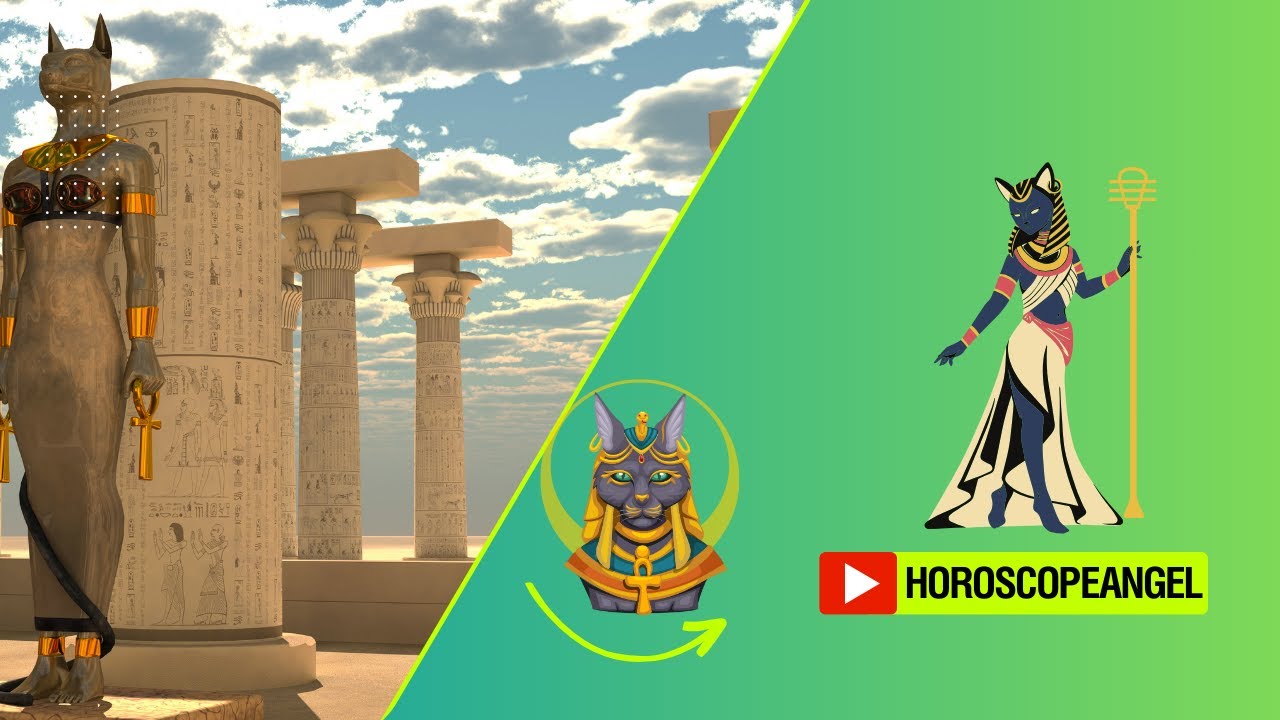
Bastet the Egyptian Goddess : video blog
20K views · Dec 2, 2023 horoscopochino.co
Bastet the Egyptian Goddess : video blog. Known primarily as the goddess of home, fertility, and childbirth, Bastet also held dominion over music, dance, and the joy of living. This multifaceted goddess's representation and significance evolved through the centuries, mirroring the changing cultural and religious landscape of ancient Egypt.
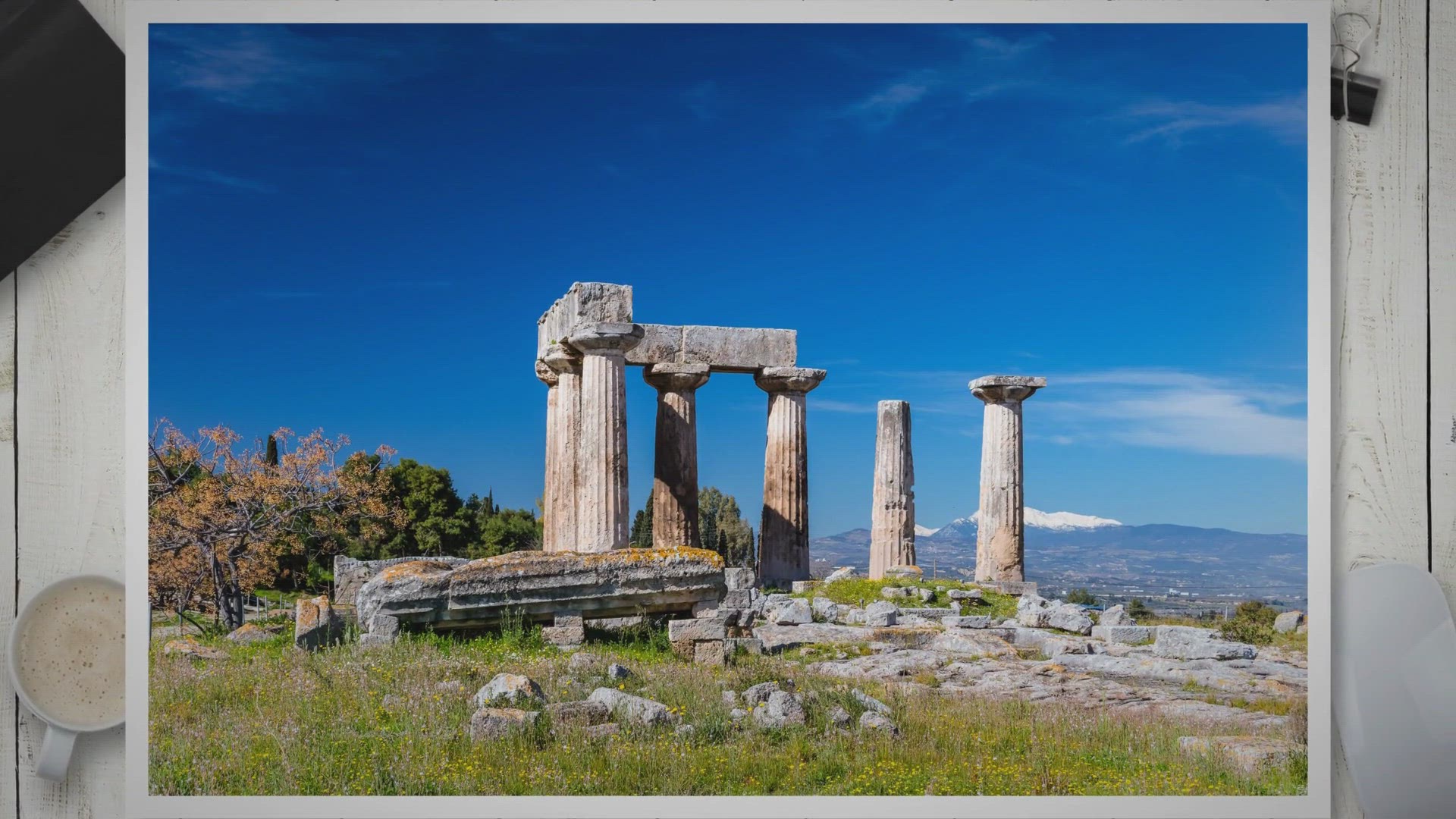
Athens Unveiled: Exploring Ancient Landmarks, Greek Culture,...
3K views · Oct 23, 2023 pcweb.info
Experience the wonders of the Ancient City of Athens in this captivating video. Join us as we embark on a journey through its historic landmarks, immersing ourselves in the rich Greek culture and indulging in mouthwatering cuisine. Uncover hidden gems and local experiences that will leave you in awe. Don't miss out on this incredible adventure. Watch now!
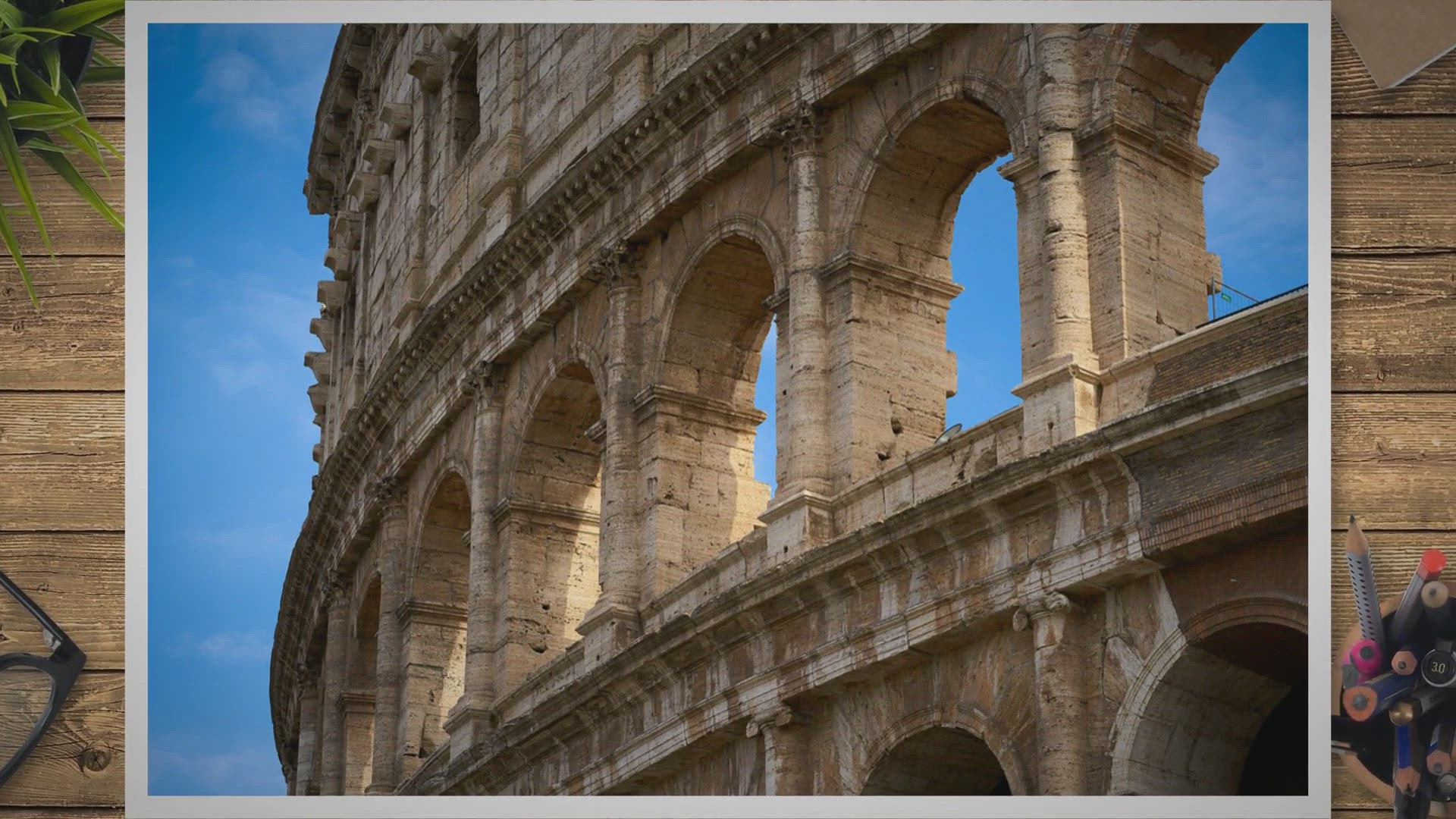
Exploring Rome: Unveiling Ancient Wonders, Culinary Delights...
1K views · Oct 21, 2023 pcweb.info
Welcome to Rome, the eternal city! In this captivating video, we invite you to embark on a mesmerizing journey through the historical landmarks, culinary delights, and hidden gems of this ancient wonder. Join us as we explore the rich history and architectural marvels that make Rome truly unique. Indulge in the mouthwatering Roman cuisine, from traditional pasta dishes to delectable gelato. But that's not all - we'll also unveil Rome's best-kept secrets, taking you off the beaten path to discover hidden gems that will leave you in awe. Get ready for an unforgettable adventure in the heart of Italy. Watch now and let Rome enchant you!
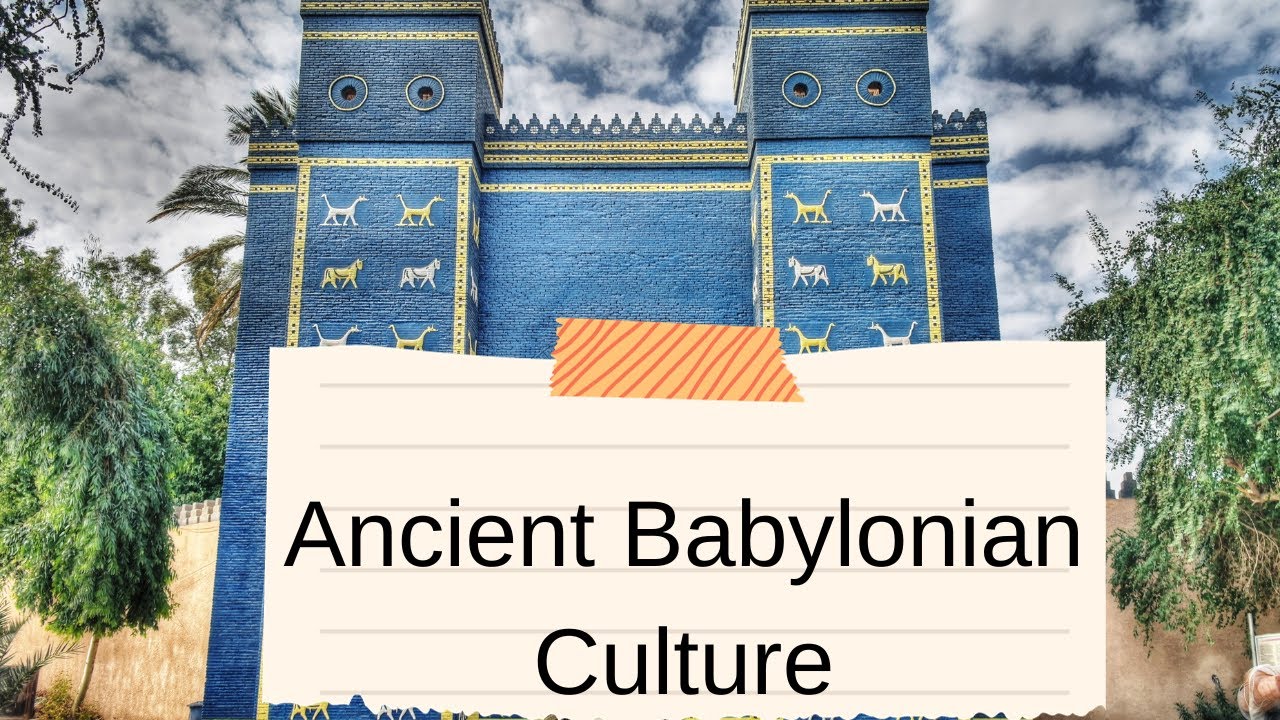
Ancient Babylonian Culture: video blog
53K views · Sep 25, 2023 pcweb.info
Ancient Babylonian Culture: video blog 1. Cuneiform Writing: The Language of Ancient Babylon Cuneiform writing was one of the most outstanding achievements of ancient Babylonia. This form of writing, which used wedge-shaped characters engraved on clay tablets, was used to record information about law, trade, religion and literature. Babylonian scribes were highly trained in this complex form of writing, and their written records provide invaluable insight into life at the time.

Ancient Babylonian Culture: video blog
53K views · Sep 25, 2023 pcweb.info
Ancient Babylonian Culture: video blog 1. Cuneiform Writing: The Language of Ancient Babylon Cuneiform writing was one of the most outstanding achievements of ancient Babylonia. This form of writing, which used wedge-shaped characters engraved on clay tablets, was used to record information about law, trade, religion and literature. Babylonian scribes were highly trained in this complex form of writing, and their written records provide invaluable insight into life at the time.
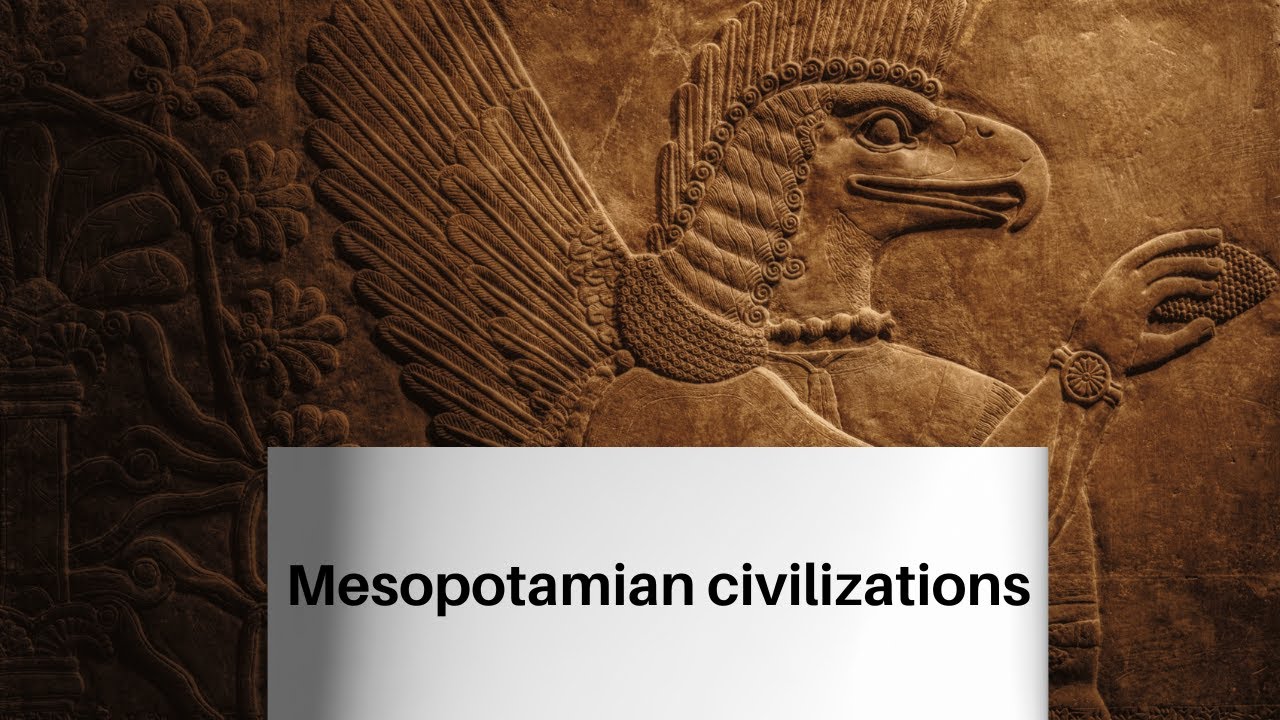
Mesopotamian civilizations
61K views · Aug 29, 2023 pcweb.info
Mesopotamian civilizations: Flourishing; Unveiling the Rich Tapestry of Ancient Societies, Innovations, and Legacy Mesopotamian civilizations: Flourishing; Unveiling the Rich Tapestry of Ancient Societies, Innovations, and Legacy Introduction The Mesopotamian civilization stands as a testament to human ingenuity and resilience, flourishing in the region known as the "land between the rivers" – the Tigris and Euphrates. With a history spanning thousands of years, this remarkable civilization emerged as a cradle of innovation, governance, and cultural development. From the emergence of city-states and the invention of writing to monumental architectural achievements and complex legal systems, Mesopotamia has left an indelible mark on the course of human history. Geographical and Historical Context Mesopotamia, situated in the present-day region encompassing modern Iraq, parts of Syria, and Turkey, was an ideal location for the rise of a sophisticated civilization. The fertile floodplains of the Tigris and Euphrates rivers facilitated agricultural prosperity, contributing to the establishment of settled communities. The earliest settlements date back to around 6000 BCE, gradually evolving into city-states by 3500 BCE. The Birth of Urban Centers and Governance The city-states of Mesopotamia, such as Uruk, Ur, and Babylon, emerged as hubs of economic, political, and cultural activity. These city-states developed complex societies marked by hierarchical structures and varying degrees of centralized governance. Temples, known as ziggurats, dominated the urban landscapes, serving as religious and administrative centers. Theocratic rulers often held power, representing the link between the divine and the earthly realms. Innovations and Achievements The Mesopotamians were pioneers in various fields, leaving an enduring legacy that continues to influence modern civilization. The invention of writing, exemplified by cuneiform script, was a monumental achievement. Initially used for administrative purposes, cuneiform evolved into a medium for recording literature, history, law, and religious texts. The Code of Hammurabi, one of the earliest known legal codes, is a testament to the sophistication of Mesopotamian legal systems. Engraved on a stele, this code outlined a comprehensive set of laws and punishments, reflecting societal norms and class distinctions. It laid the foundation for subsequent legal traditions. Architectural Marvels and Engineering Feats Mesopotamia's architectural prowess is evidenced by its awe-inspiring structures. Ziggurats, terraced pyramid-like temples, were constructed to honor deities and demonstrate the power of city-states. The Hanging Gardens of Babylon, considered one of the Seven Wonders of the Ancient World, showcased the advanced irrigation systems that allowed the lush gardens to flourish in an arid region. Trade and Cultural Exchange Mesopotamia's strategic location facilitated extensive trade networks that connected it to distant lands. The abundance of resources like timber, metals, and agricultural products attracted merchants from neighboring regions. This exchange of goods also led to the cross-pollination of ideas, resulting in a rich tapestry of cultural diversity. Religion and Cosmology Religion played a central role in Mesopotamian life, with polytheistic beliefs shaping daily activities and societal structures. Deities represented natural forces, and rituals were performed to ensure favor from the gods. Temples were not only places of worship but also centers of economic and political power. Enduring Influence The legacy of Mesopotamia reverberates through the ages. The writing system paved the way for the development of alphabets and scripts used in subsequent civilizations. Legal concepts established in the Code of Hammurabi laid the groundwork for modern legal systems. The architectural innovations of ziggurats and intricate irrigation systems foreshadowed advancements in engineering and urban planning. Conclusion The Mesopotamian civilization stands as a remarkable chapter in human history, marked by its innovative spirit, architectural marvels, legal systems, and cultural achievements. As the cradle of urbanization, governance, and sophisticated societies, Mesopotamia's legacy continues to inspire awe and admiration for the ingenuity of those who once thrived in the land between the rivers. The enduring influence of Mesopotamia serves as a testament to the indomitable human spirit's ability to shape its destiny and leave an indelible mark on the annals of time. #mesopotamia #mesopotamian
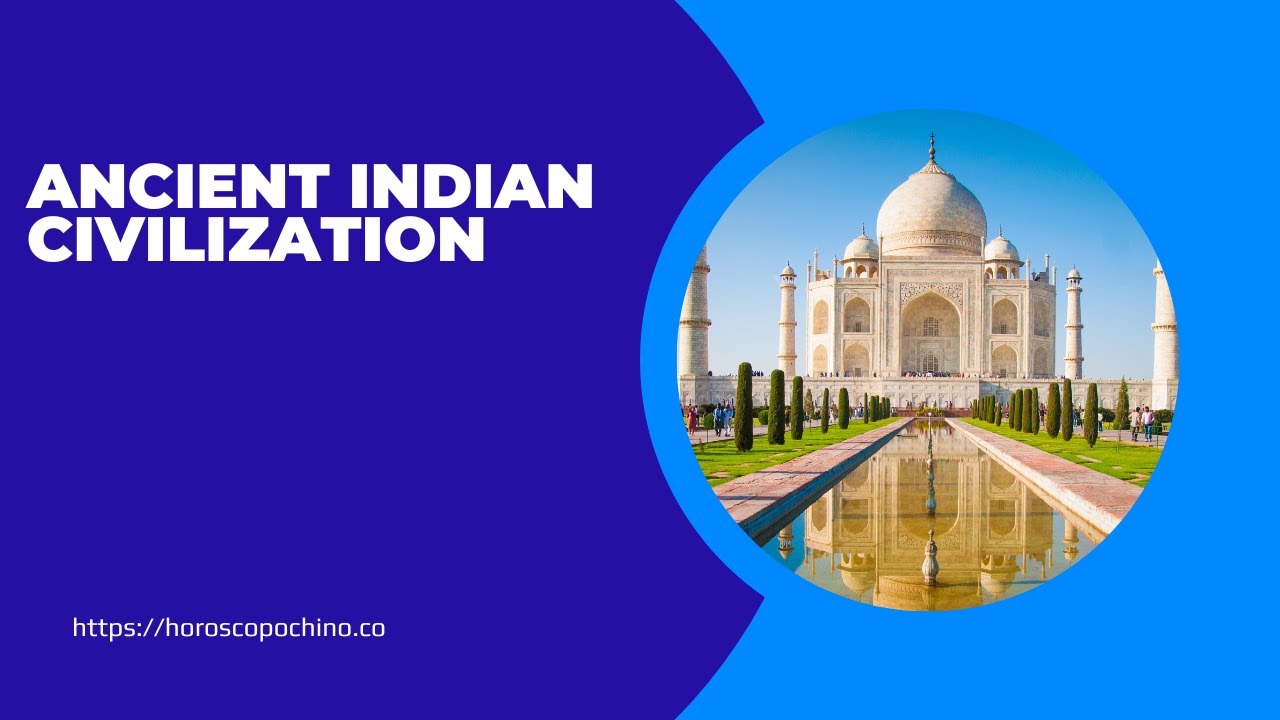
Ancient Indian civilization, video blog
41K views · Aug 10, 2023 horoscopochino.co
Ancient Indian civilization, video blog The earliest phase of ancient Indian civilization is associated with the Indus Valley Civilization, also known as the Harappan civilization (c. 2600-1900 BCE). Flourishing along the Indus River and its tributaries, this enigmatic society developed sophisticated urban centers such as Harappa and Mohenjo-Daro.

Marriage in Ancient Israel, video blog
7K views · Jul 30, 2023 horoscopochino.co
Marriage in Ancient Israel, video blog By understanding the customs and traditions of ancient Israel, we'll be able to better understand the origins and evolution of marriage as we know it today. So join us as we explore marriage in ancient Israel! Marriage in Ancient Israel: A Glimpse into Tradition and Customs
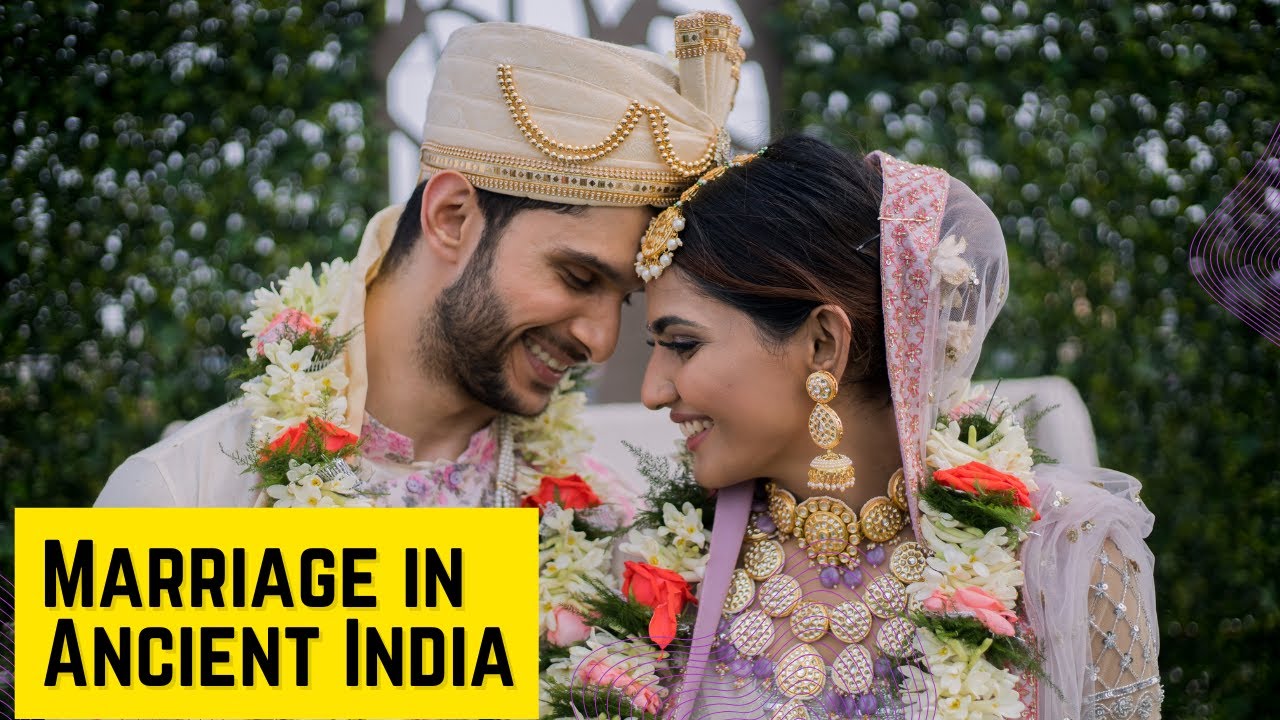
Marriage in Ancient India-video blog
33K views · Jul 28, 2023 horoscopochino.co
Delve into the enigmatic realm of ancient Indian marriages through this captivating video! Unravel the captivating customs and traditions that lent profound significance to this sacred institution, leaving an indelible mark on contemporary Indian culture. Experience the origins of ancient Indian marriages, shrouded in the mystique of the Vedic period. Witness the sacred Vivaha ceremony, an exquisite blend of vows, hymns, and priestly blessings, uniting souls for a lifetime. Marvel at the intricate web of social hierarchies woven through endogamous alliances, preserving the tapestry of traditions. The role of women in these marriages was imbued with devotion, as they adorned the mantle of dutiful wives and mothers. Yet, exceptions emerged among royalty and the influential, where women found their voices echoing with empowerment. Discover the complexities of dowry, once a symbol of security, but later marred by materialism. Witness the delicately handled concept of divorce, a last resort in a society valuing marital harmony. Today, echoes of ancient Indian marriages resound in the choices of modern couples, embracing cherished traditions while forging new paths. Join us on this cultural odyssey to comprehend the essence of #ancientindianhistory and the enduring legacy of #indianmarriages.
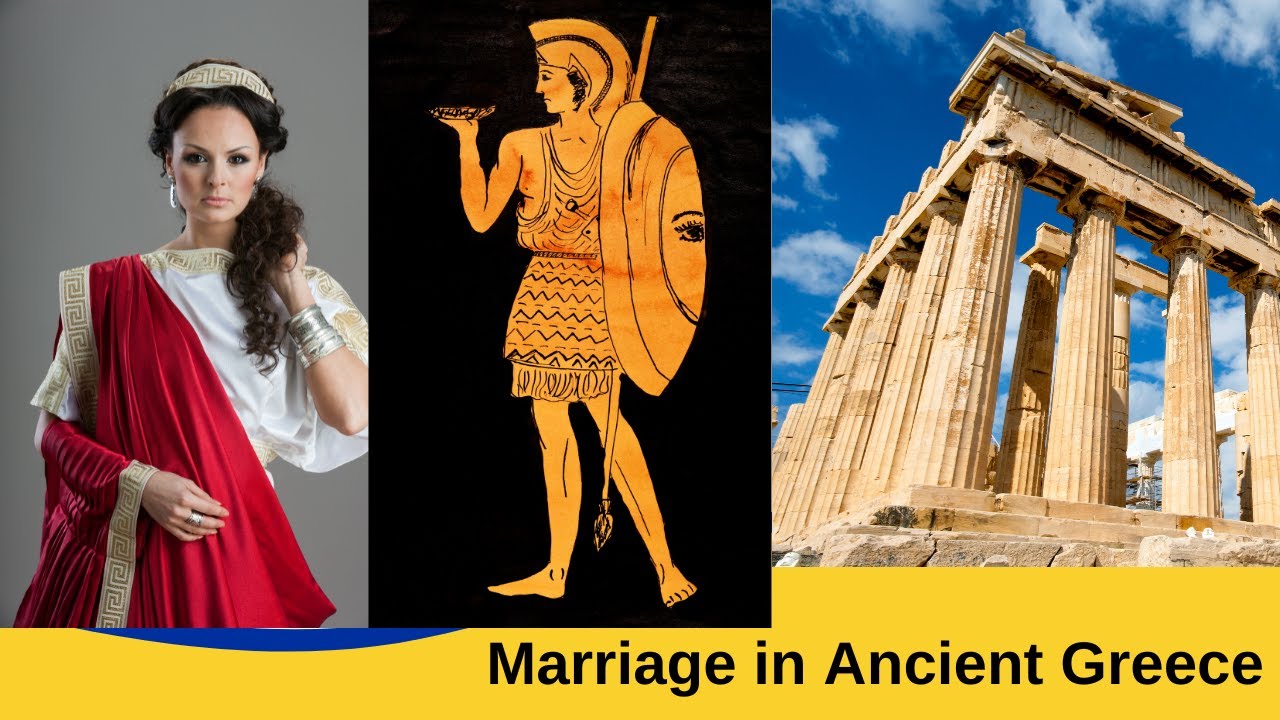
Marriage in Ancient Greece, history video blog
3K views · Jul 21, 2023 pcweb.info
Marriage in Ancient Greece, history video blog Marriage in ancient Greece was primarily seen as a social contract between two families rather than a romantic bond between individuals. The main purpose of marriage was to produce legitimate offspring and maintain the family lineage. It was a transaction negotiated by the fathers of the bride and groom, often involving the exchange of dowries and the sealing of alliances.
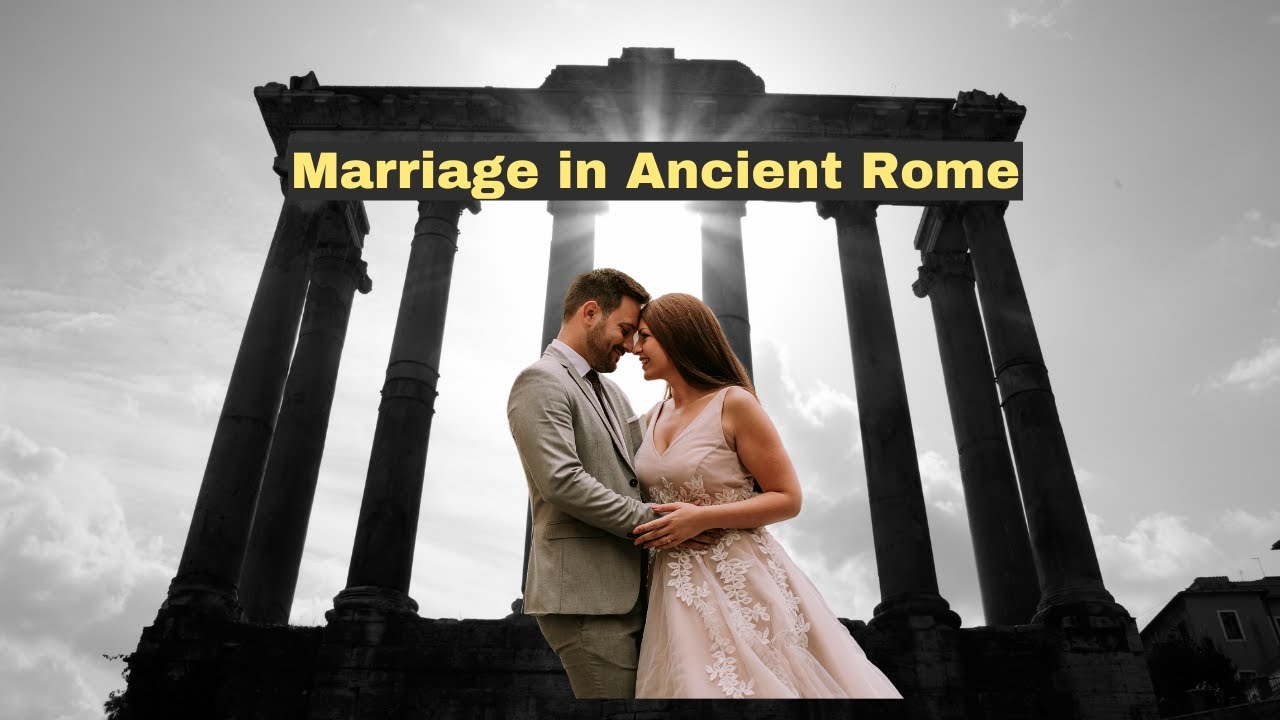
Marriage in Ancient Rome: video blog history
11K views · Jul 19, 2023 pcweb.info
Marriage in Ancient Rome: video blog history. Marriage in ancient Rome was a strictly regulated affair. Roman society emphasized the institution of marriage as a means to preserve social order and strengthen family ties. It was seen as a duty to the state, and therefore, the choice of a suitable partner was not solely based on romantic inclinations but also on practical considerations.
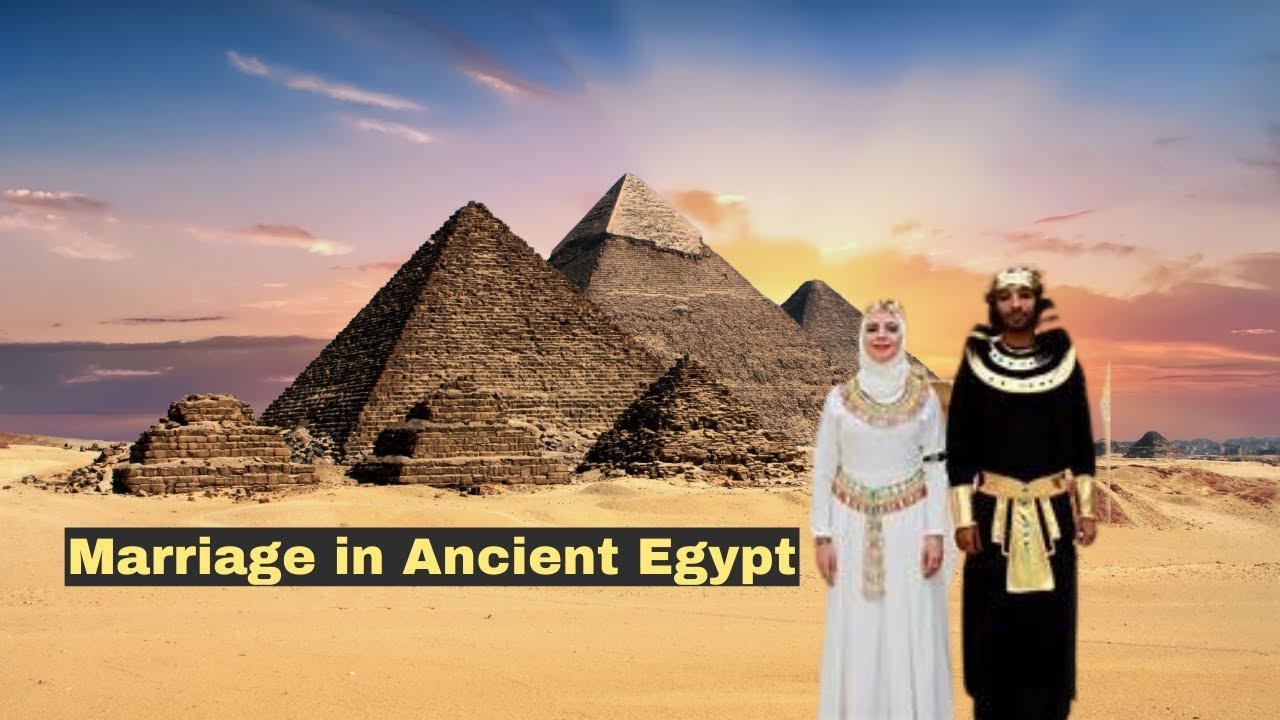
Marriage in Ancient Egypt, video blog
6K views · Jul 19, 2023 pcweb.info
Marriage in Ancient Egypt, video blog history. In ancient Egypt, marriage was primarily a heterosexual union, with men and women entering into lifelong partnerships. The primary purpose of marriage was procreation, as the Egyptians believed that having children ensured the continuation of their family and the well-being of the deceased in the afterlife. Additionally, marriage was seen as a way to strengthen alliances between families and consolidate wealth.

Adultery in ancient Egypt and India
2K views · Jan 13, 2023 pcweb.info
Adultery in ancient Egypt and India Adultery is defined as sex between a married person and another person who is not her legal partner, that is, her husband or wife. Egyptians in ancient times had an informal attitude about sex and virginity, once the marriage bond formed between a man and a woman, they were expected to remain faithful to their partners, a sexual relationship between a married person with a person who not being his spouse is adultery for the Egyptians and was punished or punished, For example Anubis, Anpu's wife, and her brother Bata experience the consequences of adultery, an action followed by Bata blaming Anpu's wife for seducing him, later , Anpu's wife was burned alive for infidelity due to the serious accusations. For its part, in Indian culture it is considered that marriage is a sacred relationship that unites a man and a woman for life and even continues in the afterlife since it combines two souls in one flesh, Hindu law defines adultery as a sexual relationship, which is deliberate between a man or a woman married to a person who is not their spouse, those who violate these sacred relationships of marriages suffer social ridicule and social contempt in general, some of the Punishments prescribed in ancient Hindu law are banishment from the kingdom, flogging, branding on the forehead, amputation of fingers or a hand, ears or noses; This is how under the old Indian law, the adulterer received brutal punishments for his sin, we must clarify that currently Hindu laws consider adultery a crime and is punishable by law with up to 5 years in prison. And remember that if you want to know more, visit our original post on our blog, share this information with your friends, see you on the web https://pcweb.info/adultery-in-ancient-egypt-and-india/?lang=en